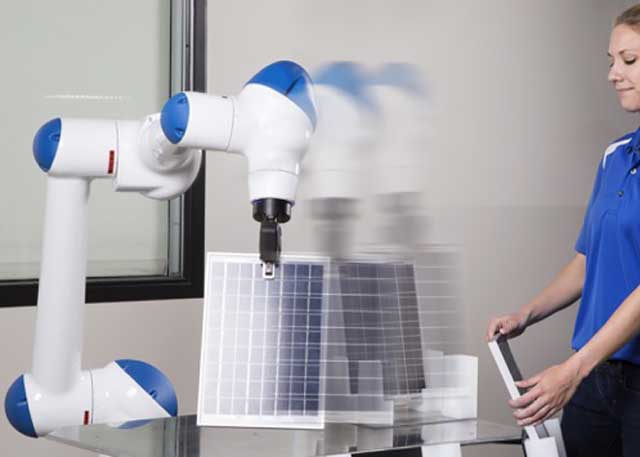 When you are contemplating a challenging, tedious, dirty (or even dangerous) job there is usually a heightened sense of satisfaction when you get it completed. That sense of accomplishment will occur the first time you do it, and perhaps even after the first few times. However, over time, these types of jobs are likely to become more tedious, and eventually this could have a negative impact on operators – as well as possible preventing them from spending time on higher value tasks in the manufacturing plant.
When you are contemplating a challenging, tedious, dirty (or even dangerous) job there is usually a heightened sense of satisfaction when you get it completed. That sense of accomplishment will occur the first time you do it, and perhaps even after the first few times. However, over time, these types of jobs are likely to become more tedious, and eventually this could have a negative impact on operators – as well as possible preventing them from spending time on higher value tasks in the manufacturing plant.
You could automate the task – but installing an industrial robot to take over tedious or monotonous work may not always be the answer.
Industrial robots can be a complex solution, especially for small and medium-sized businesses and not every plant manager has the staff to program (and reprogram) a robot, or the resources to hire an integrator. Also, health and safety requirements will mean that the robot’s working area will need to be safeguarded to prevent potential injury to those working close by.
Depending on your application, you might be able to overcome these challenges by using a special type of industrial robot: a collaborative robot, or cobot. A cobot is relatively lightweight and is designed to operate safely in close proximity to people. This can eliminate the need for safety curtains or fencing, thanks to the use of proximity sensors or force-limiting technology and with the proper application and risk assessment.
Cobots are also easily programmed through hand guiding, which allows a worker to move the cobot’s arm to each point in a job instead of the more time-consuming process of typing commands into a pendant.
Those with only a limited knowledge of cobots may refer to them as “fenceless robots”, implying that they are always safe. However, if you are manufacturing knives with a fenceless robot, is an operator working nearby any safer because the robot is moving slowly? It’s important to evaluate the complete system.
Before investing in a cobot, conduct an appropriate risk assessment. Certified experts in robotics can handle such assessments so that the robot, the application and operators interact safely. Getting this right brings the dual benefits of a safe place to work and improved productivity.
Here’s an example we saw during a site visit. A cobot grabbed a part for a lifting mechanism out of a forming machine, inspected it using a 2D camera and then inserted the part into another nearby machine for polishing. The operator previously manning this station risked injury from back strain as a result of this repetitive task and, toward the end of their shift, wasn’t examining the piece as closely as at the beginning of the day. The cobot eliminated the risk of injury to the worker and provides more consistent quality control.
Collaborative robots can work alongside humans and are easily configured. If a cobot comes in contact with an operator, it immediately stops to minimise or avoid injury. If you decide to reconfigure your production line to handle a new product, a properly trained operator can re-program a cobot in an hour or two. Compare that with one or two days of lost production due to reprogramming an industrial robot to handle a production line changeover. For most plant managers, that alone makes a cobot a worthy investment.
Collaborative robots are a way to future-proof a manufacturing process. If management wants to change the style or type of product its plants are producing, a collaborative robot is versatile enough to handle whatever changeovers are needed with minimal effort and time. Collaborative robots can provide benefits in safety, cost, quality and return on investment, making them a feasible solution for the technical and economic challenges faced by supply chain organisations, no matter what the industry or size of the firm.
A good example of this type of human collaborative robot is the Motoman HC10 which has been developed by Yaskawa. This new generation of robotics is versatile, easy-to-use affordable and built with the industrial strength for which Yaskawa is well known.
The HC10 has been designed for applications which require a simple, easy and safe robotic solution to automating tasks that require working in close proximity to human operators. They are designed to operate in PLC controlled manufacturing systems, they eliminate the need and the costs associated with physical guarding and feature simplified built-in network safety IO.
www.motoman.com/collaborative
jonny.grey@yaskawa.eu.com
www.yaskawa.eu.com

